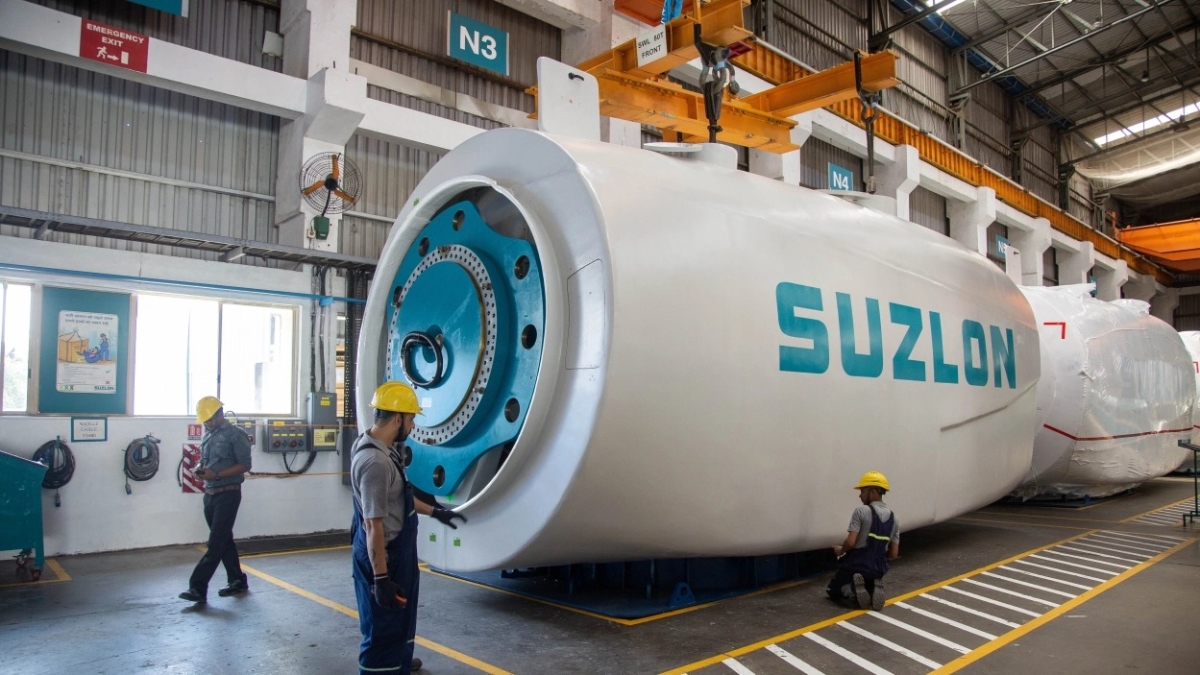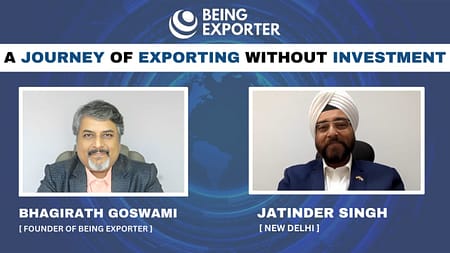‘Being Exporter’ has churned out successful exporters out of students, working professionals, retired professionals, homemakers, and businessmen in a very short time
India might be amongst the world’s top 20 nations for the exports of merchandise goods. But, the country still lags way behind China and U.S in the overall exports of commodities and services. With the Central Government focusing on the increased liberalization of trade, there are abundant opportunities for Indian entrepreneurs to establish a profitable export business. India may boast of reputed educational and training institutes, but there isn’t a single institute where one can be educated in becoming a successful exporter. In a tete-a-tete with senior journalist Melvyn Thomas, Bhagirath Goswami, founder of the Surat-based ‘Being Exporter’ talks about his mission to train entrepreneurs and common citizens to master international trading skills and become successful exporters. Q-What inspired you to launch the ‘Being Exporter’ initiative?
Q-What inspired you to launch the ‘Being Exporter’ initiative?
A – I got the inspiration to launch ‘Being Exporter’ from the farmers of Saurashtra. A few years ago, I visited Saurashtra and met few farmers who owned huge farm fields, but they were unable to meet the monthly expenses of their families. A farmer owning 50 bigha farmland was able to earn a paltry Rs 15,000 income from harvesting crops during the season. Saurashtra being the arid land, the heavy to heavy rains would destroy the standing crops. I delved deep into the issue and found that the farmers were not getting the minimum support prices for their farm products and that they ought to start the export. When I put forth the idea of export in front of the farmers in Saurashtra, they were hesitant and were mired in myths. Farmers believed exporting farm products was a cumbersome process and involved high risks. This was the turning point, and I firmly decided to overcome the myths of people regarding exports. I started visiting universities and colleges to spread awareness among the next generation, attended scores of seminars to spread knowledge that anyone can become a successful exporter. This is how the journey of ‘Being Exporter’ started. I am on the mission to turn all the manufacturers, be it small, medium, or big, into a successful exporters. I yearn for the day when the Indian Rupee will have a similar value to that of the US Dollar when all the manufacturers in India will become exporters.
Q-Why does India being a manufacturing hub of the world after China, still lags in exports?
A- Though India being a manufacturing hub, exports over the last decade have not been encouraging. Since 2011, the exports from India is hovering around $300 billion. I have come across an end-number of manufacturers, who don’t have proper knowledge about exports. They (manufacturers) are suffering from export-related myths; losses, finding buyers, how to do business in unknown countries, lack of knowledge about the international market, the nitty-gritty of exports, etc. On the other hand, China is the world’s largest exporter with annual exports of $2.6 trillion. IF you go to China, even a small-time manufacturer would be exporting his or her products to the U.S and other countries. The Indian manufacturers need to take lessons from their counterparts in China on how to become successful exporters. No university or college in India has a separate degree or curriculum on ‘how to export’. Being Exporter is the only platform where anyone and everyone can become exporters in a very short span.
Q-How does your comprehensive training program turn an individual into a successful exporter?
A-My goal and mission is to educate people from all walks of life, be it manufacturers, students, homemakers, service-class, etc., on becoming successful exporters. Being Exporter has a comprehensive curriculum, which covers all technical as well as practical aspects of exports. First, we start with a five-day program on the virtual platform where the aspirants are given two hours of practical training with assignments every day. The next phase starts in the form of a one-year program. This program consists of 24 sessions of three hours each on every alternate Sunday. There is a one-and-a-half-hour of weekly sessions where the aspirants are trained in skillset, mindset goals, tracking system, achievements, scoreboard, review calls, challenges, and tasking. The one-year program hones the skills of the aspirants and ensures that they start addressing the practical issues to become successful exporters. The program covers all the aspects of exports including how to approach a manufacturer for a joint venture, how to legalize your export business, how to find buyers in the international market, how to generate leads, converting sale logistics, documentation, banking, and funding, bank account, risk management, insurance, forwarding agents, government schemes and benefits, freight forwarding agents, packing houses, inspection agencies, Custom House Agents (CHAs), currency hedging. Apart from this, the aspirants also gain knowledge on skill development, leadership management, team training, negotiations, and Research and Development (R&D).
Q- What are the success stories at ‘Being Exporter’?
A-In my journey at Being Exporter, I have seen a 24-year-old second-generation entrepreneur exporting four containers of a completely new product to an international buyer on advance payment. This is a very powerful story of a young entrepreneur who has become a successful exporter after joining the Being Exporter community. There is a banking professional, who joined the program and exported his first consignment worth Rs 4 crore within a fortnight. Till now, the ‘Being Exporter’ community has more than 300 successful exporters who are from varied backgrounds including working professionals, students, businessmen, retired professionals, and homemakers. These exporters are dealing in fruits and vegetables, cereals and pulses, rice, textiles, diamond jewelry, loose diamonds, marbles and granite, ceramics, tiles, chatia mats, plastic chairs, home appliances, pressure cooker, engineering products, nameplates, etc. For being an exporter, one does not require to be a manufacturer or owner of a production house. Everyone can become exporter, but the only thing is that you have to identify the right product for the right market. Q-What is the export procedure?
Q-What is the export procedure?
Step-1: Receipt of an order: Exporters are required to register with the Income Tax department and the Reserve Bank of India (RBI). They (exporters) are required to appoint agents to collect orders from foreign buyers (importers) or through indent houses.
Step-2: Obtaining license and quota: Once the order is received, the export is required to secure an export license from the Government of India.
Step-3: Letter of Credit: The importer has to send the letter of credit to the exporter.
Step-4: Fixing the exchange rate: Before exporting commodities and goods, the foreign exchange rate has to be fixed i.e the rate of the Indian rupee against the US Dollar. The foreign exchange rate fluctuates from time to time. Thus, the importer and exporter have to fix the exchange rate mutually.
Step-5: An Indian exporter has to comply with certain foreign exchange formalities under the Foreign Exchange Regulation Act of India (FERA).
Step-6: Order Execution: Exporter is required to pack and mark the goods as per importer’s specifications, pre-shipment inspection by export inspection agency, obtaining insurance policy from Export Credit Guarantee Corporation (ECGC) against the credit risks, marine insurance policy as required, the appointment of forwarding agent or Customs House Agent (CHA), etc.
Step-8: Bill of Lading: An official receipt that provides the full description of goods loaded on the ship and the port of destination.
Step-9: Shipment advice to the importer: The exporter has to send shipment advice along with the copies of the packing list, a non-negotiable copy of the bill of lading, a commercial invoice, an advice note.
Step-10: presentation of documents to the banks: the bill of exchange along with documents called ‘documentary bill of exchange’ has to be presented to the bank.
Step-11: Exporter has to submit the bill of exchange for completing the banking formalities. The exporter receives payment in foreign exchange.









